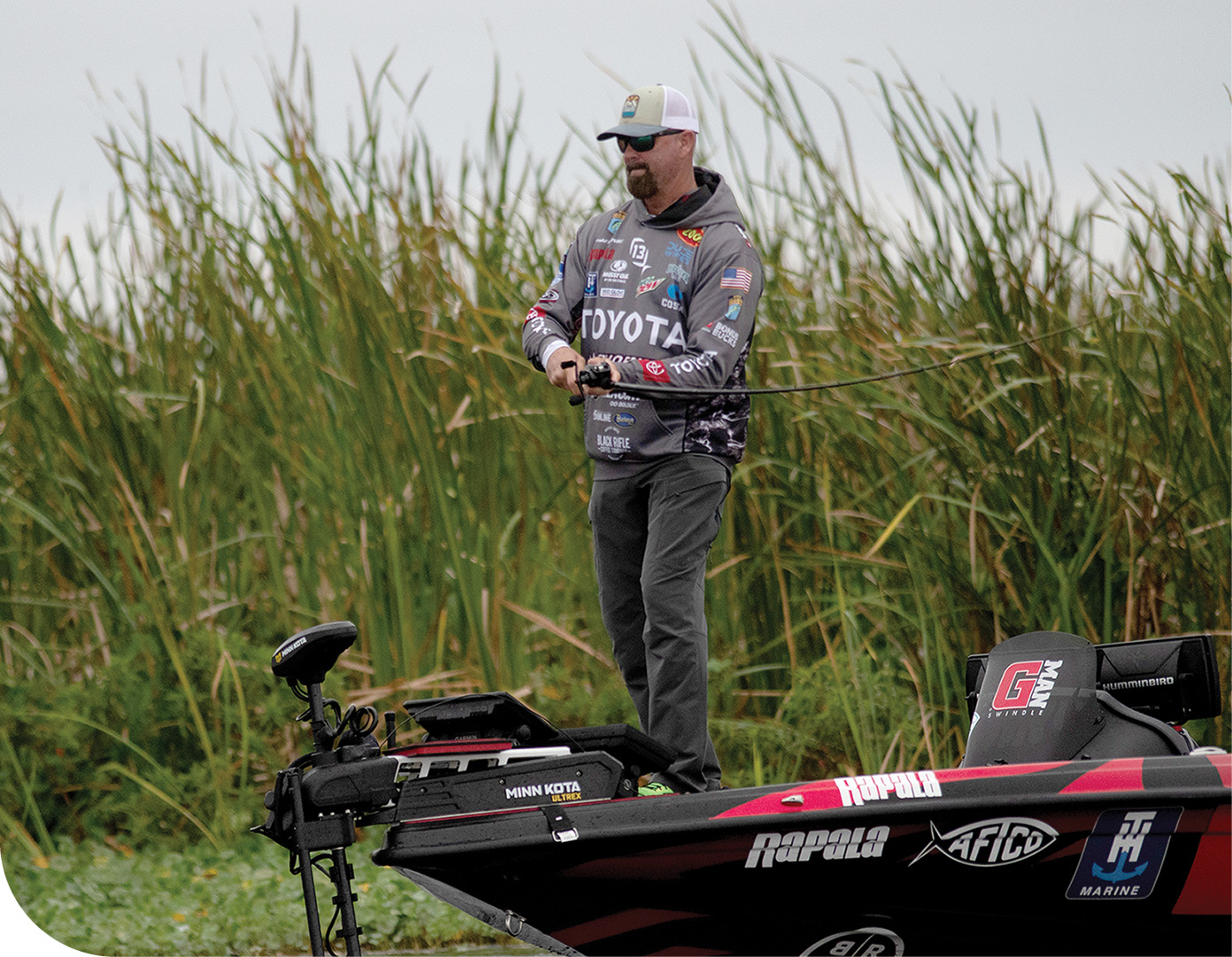
When winter grips the country, bass anglers feel a bit hamstrung when it comes to lure choices.
Generally, it’s a Damiki rig dangled over the deep bottom, a finesse jig, a jerkbait snapped in mid-depth, a Silver Buddy-style bait ripped vertically or some kind of painfully slow, finesse approach.
Well, a more open-minded approach may be better, according to innovative bass pros who have had success with quirky wintertime presentations.
Here are five you might want to add to your list of tactics when your local bass are in winter lockdown.
Slow roll a jig
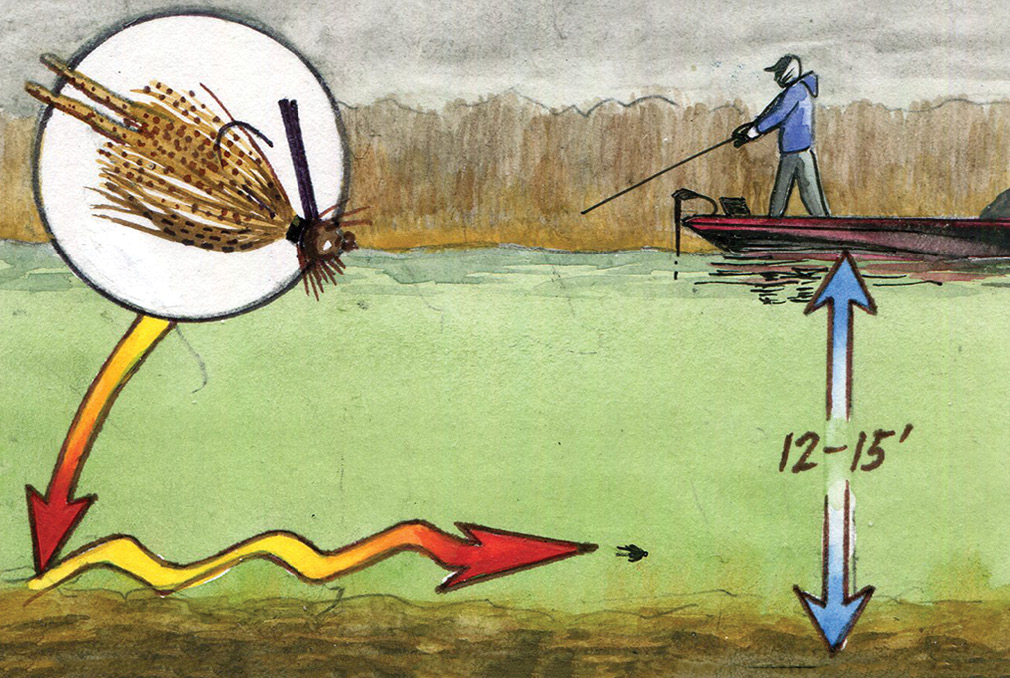
Gerald Swindle recalls fishing along Table Rock Lake’s rocky shoreline one wintry day.
“I’d been catching bass on a crankbait, but the water started clearing up and I couldn’t get a crankbait down to depths where they had pulled back,” he says. “I picked up my 1/4-ounce Buckeye Ballin’ Out Jig, which is a little compact jig, with a Zoom twin-tail trailer, and started making the same cast out in a little deeper water.”

Swindle said he let the jig settle on the bottom and began slowly winding it in.
“It was like magic,” he adds. “I started doing it at Smith Lake and it worked there, too. When the water is clean and fish are using rocky banks, it’s the deal.”
He positions his boat in 12 to 15 feet and makes long casts, holding the rod tip down and winding the bait the same way one would slow roll a spinnerbait, feeling it gently touch the rocks.
“We always thought that when the winter bass stopped biting the crankbait that we’d have to slow down and pitch a jig, but this way you can cover water thoroughly,” adds Swindle. “The bite is violent, and I’ve caught a lot of big fish doing it.”
You don’t need wind, clouds or sunshine for it to be effective. He casts ahead of the boat and parallel to the bank and in slightly deeper water.
“As long as you keep contact with the bottom, there’s a good chance to catch a bass,” he says.
Swim a booty by ’em
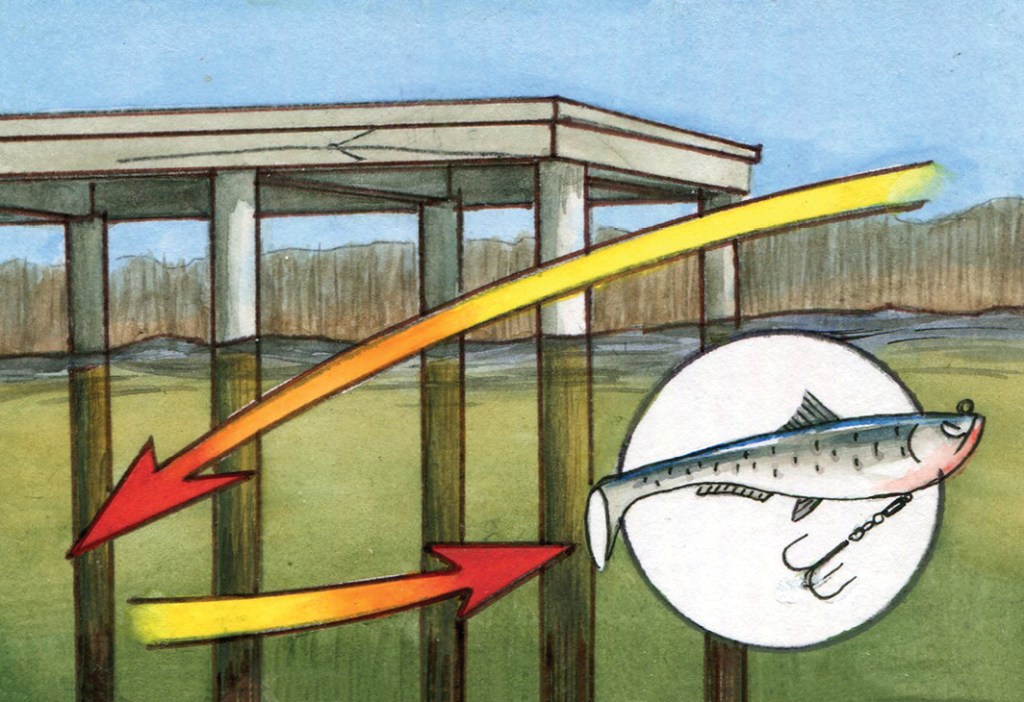
You can finesse winter bass, or you can do what John Crews does on lakes that have gizzard shad: Go with a big ol’ boot-tail, harness-style swimbait.
Gizzard shad tend to grow larger than threadfin shad and are hardy; hence they can survive in cold weather. Also, Crews notes, gizzard shad rarely go deeper than 20 feet, and you can find them in 10 feet or less in 40-degree water.
“When you find that situation, those gizzard shad are a big part of a big bass’ diet that time of year,” he explains. “The slow-wobbling boot-tail swimbait resembles those shad.”
Crews opts for the 6-inch Spro Megalojohn swimbait that has a hook harness built into the head of the soft-bodied lure.
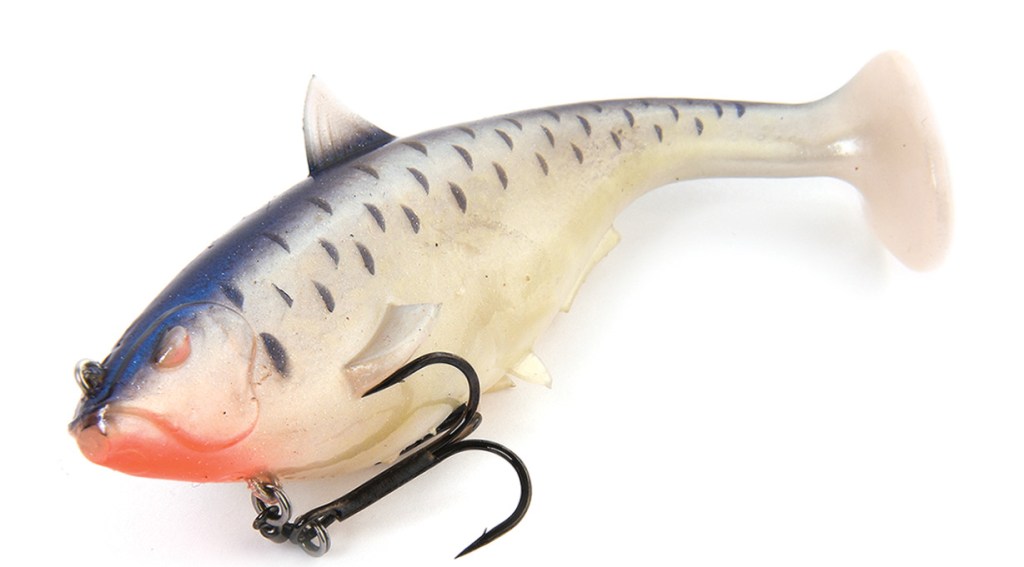
“You think of these types of lures for spawn, postspawn and when fish are feeding on big shad,” he says. “But in wintertime, that bigger profile with a tail thump can be a good choice, especially if you have wind and stain in the water.”
The Bassmaster Elite Series pro from Virginia likes to fish it around bridges, deep boat docks and points.
“In those situations, smaller baits aren’t as effective in stained water unless the lure falls right in the fish’s face,” he adds.
He fishes the Megalojohn with a slow, steady retrieve.
“You may have to play with depth zones,” Crews says. “You cast it out and wait for it to get down, then slow wind it. If the water is shallow, you can wind it a bit faster.”

He throws it on 18-pound Sunline Shooter and a 7-10 Cashion ICON Big Bait Rod. He likes brighter colors, like “cell mate.”
“Don’t set the hook like you would on a flipping stick,” he insists. “With that harness-style swimbait, keep reeling and let the rod load. Otherwise, you may pull that big-bodied bait out of the fish’s mouth before the hooks bury.”
Yo-yo a lipless crankbait
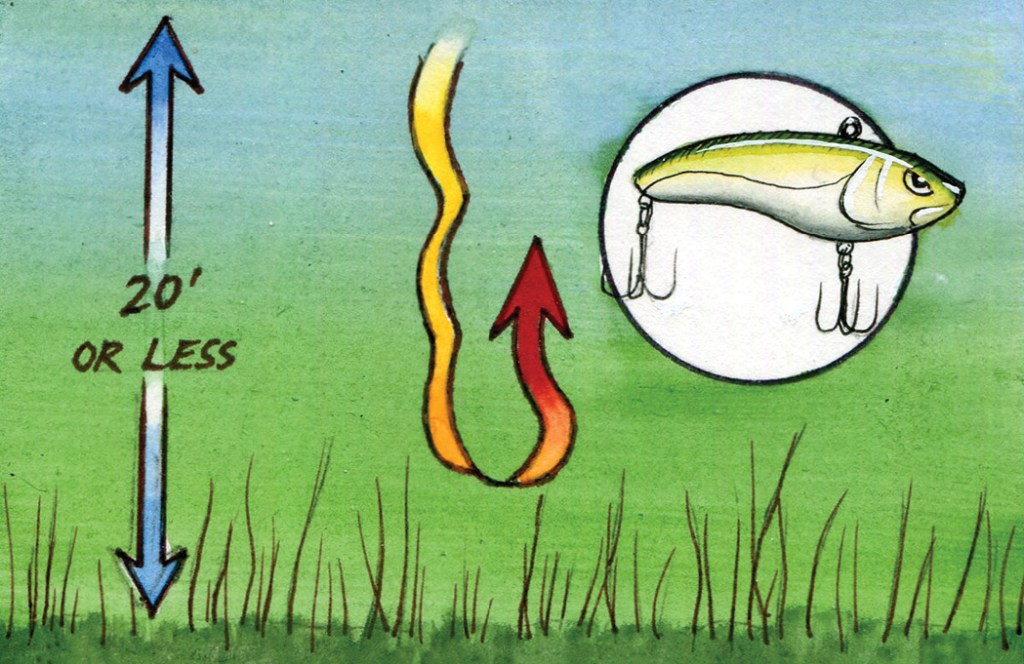
Most winter anglers know the effectiveness of vertically fishing blade baits like the Silver Buddy.
“It’s effective, for sure, but it doesn’t have rattles and has a smaller profile,” says Maryland pro Bryan Schmitt.
Jigging a lipless crankbait like the Spro Aruku Shad has become a big part of Schmitt’s wintertime success on tidal waters like the Potomac River. He acknowledges that the lipless crankbait is generally thought of as a horizontal, shallow grass lure but says it can be a very good option for deep wintertime fishing.

“I do most of my winter fishing on the Potomac and other tidal waters, but I’ve caught fish doing this around the country,” he says. “I won a wintertime Toyota tournament in Florida because of my history of jigging a lipless in tidal water.”
He’s targeting deeper grass edges or grass flats in 20 feet or less, where he says bass will “hunker down” during winter months.
He yo-yos the bait in short bursts, giving the appearance of dying baitfish. And because of the size and rattles, it has good drawing power for nearby bass.
“I like the Aruku because it shimmies on the fall and the hooks rarely foul,” he describes. “I like to snap it, trying to stay within 2 feet of the bottom.”
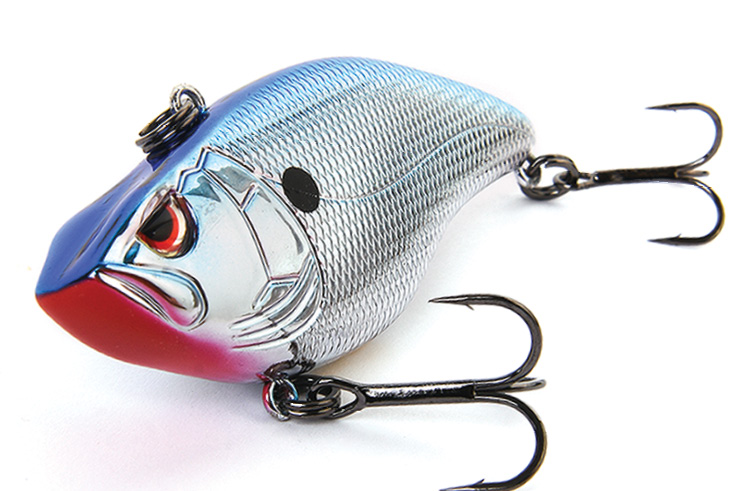
He’ll have three different sizes on his boat deck to give the fish different looks. When around big fish, he likes to use the larger size.
Fatty jigs for frigid bass
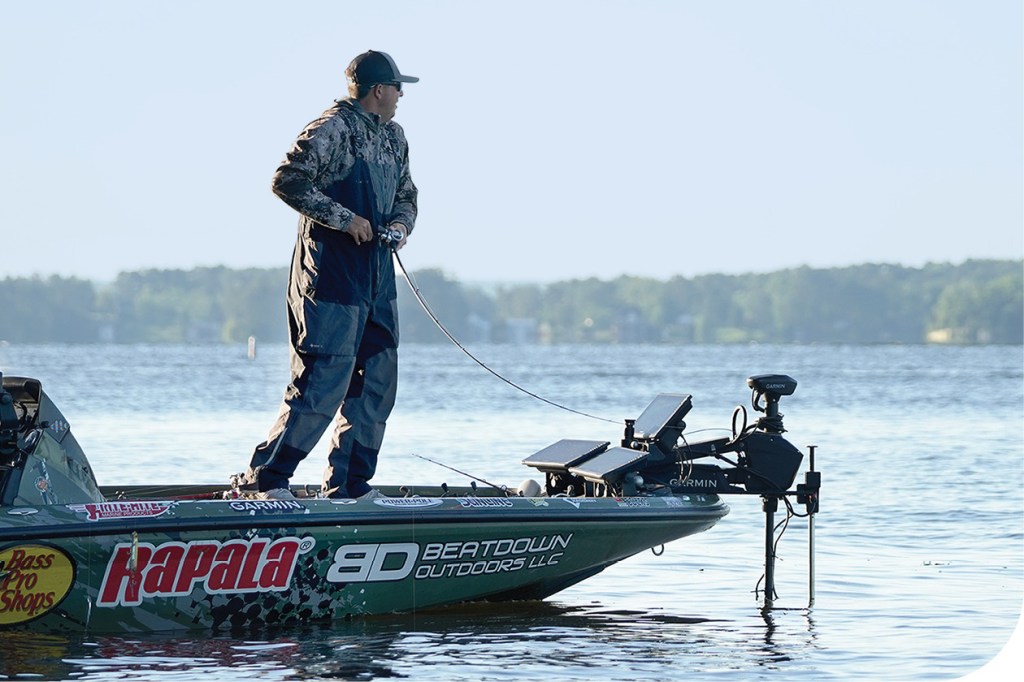
Yes, jigs are common lures for winter fishing.
“Most anglers are throwing 1/4- or 3/8-ounce jigs or spider jigs that time of year,” says Missouri pro Cody Huff. “Light and finesse-y is the common mindset, but not for me.”
Huff says he’s had a lot of success with a 3/4- or 1-ounce Missile Baits Ike’s Head Banger Jig fished around deep brush and structure, such as steep drops, channel swings, bluff ends, and even deep boat docks.
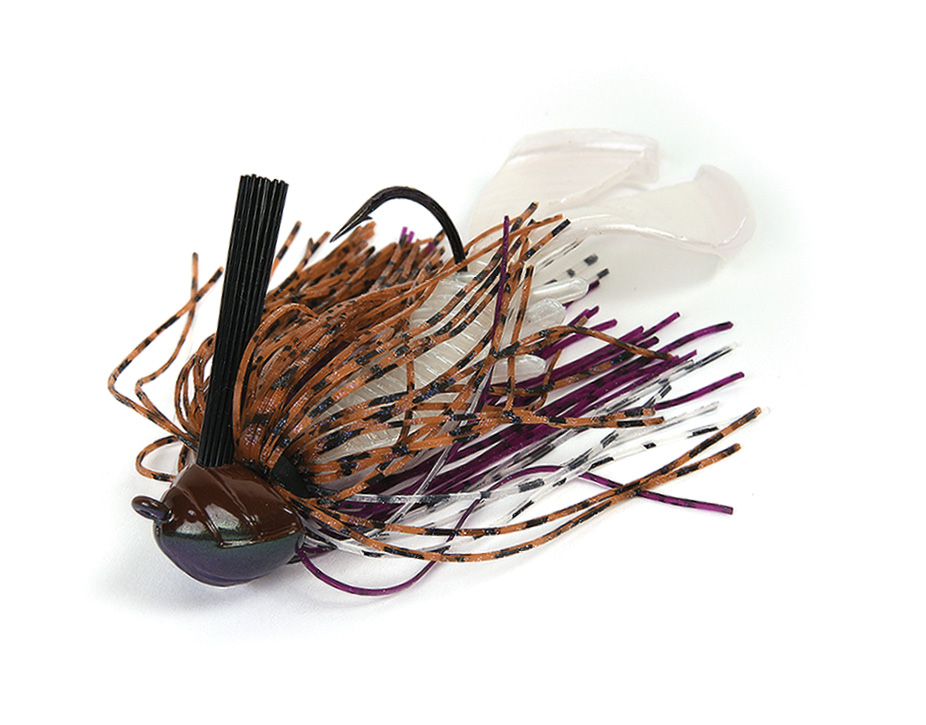
His trailer is big, too. While traditional thinking for winter lures calls for subtle movement, he likes the Missile Baits Chunky D, a twin-tail plastic that kicks and gyrates on the fall.
“People think you have to fish lightweight, slow-falling, nonintrusive baits to get bites that time of year,” Huff adds. “You wouldn’t believe how many bites you get with that heavy jig.”
He throws it on a 7-4 Bass Pro Shops CarbonLite Dragging Rod and Bass Pro Shops Platinum baitcaster spooled with 18-pound Sunline Shooter.
“I like to fish it from 18 to 35 feet of water in highland reservoirs with rocky bottoms and a good crawfish population,” Huff explains. “Some days they want the bait hopped along the bottom, but a lot of times I’m just slowly dragging it.”
Huff says the technique works especially well during dark, dreary days and when the water temperature is 38 to 50 degrees.
“I’ve caught some mid-20-pound bags doing this from December to February,” he adds. “It’s amazing how many reactionary bites you get with this.”
Get a good wintertime ‘buzz’
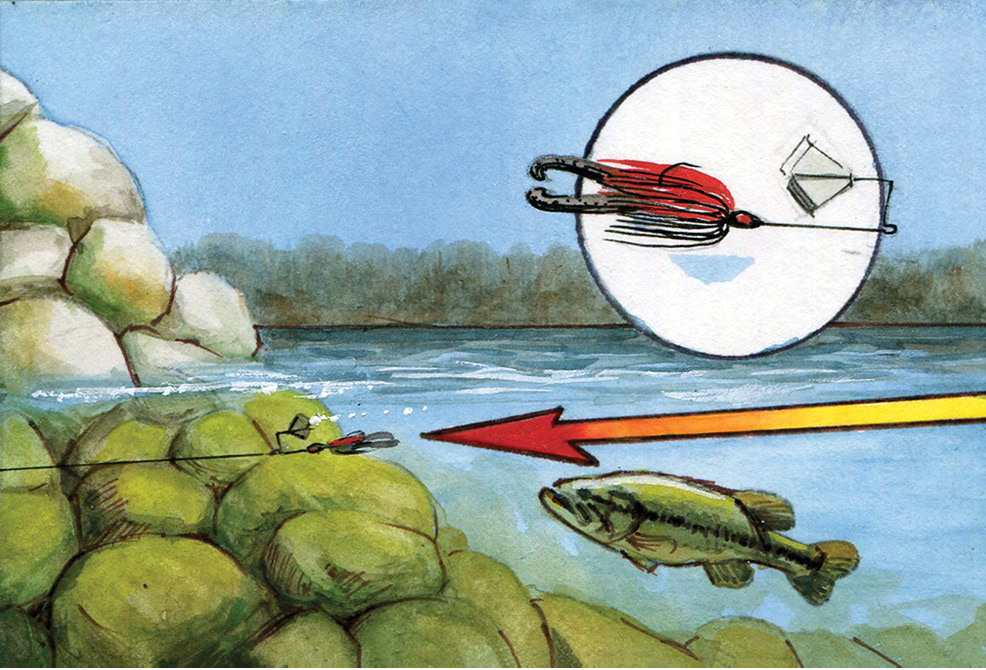
Buzzbaits during the dead of winter? Crazy, right?
Not according to former Bassmaster Elite Series pro Derek Hudnall.
“I love it because it’s a great bite and nobody does it,” says the Louisiana angler. “Everyone thinks the water is too cold and bass won’t hit topwaters, but that is absolutely untrue.”
He admits the fish aren’t as active, but if the situation is right, you can have some incredible days.
“The perfect situation is when you’re coming off an extremely cold weather pattern and have a couple days of warm weather,” describes Hudnall. “Those cold-blooded fish need sunshine and will push shallow where they can absorb the heat, like around riprap, wood or rocky bottoms.”
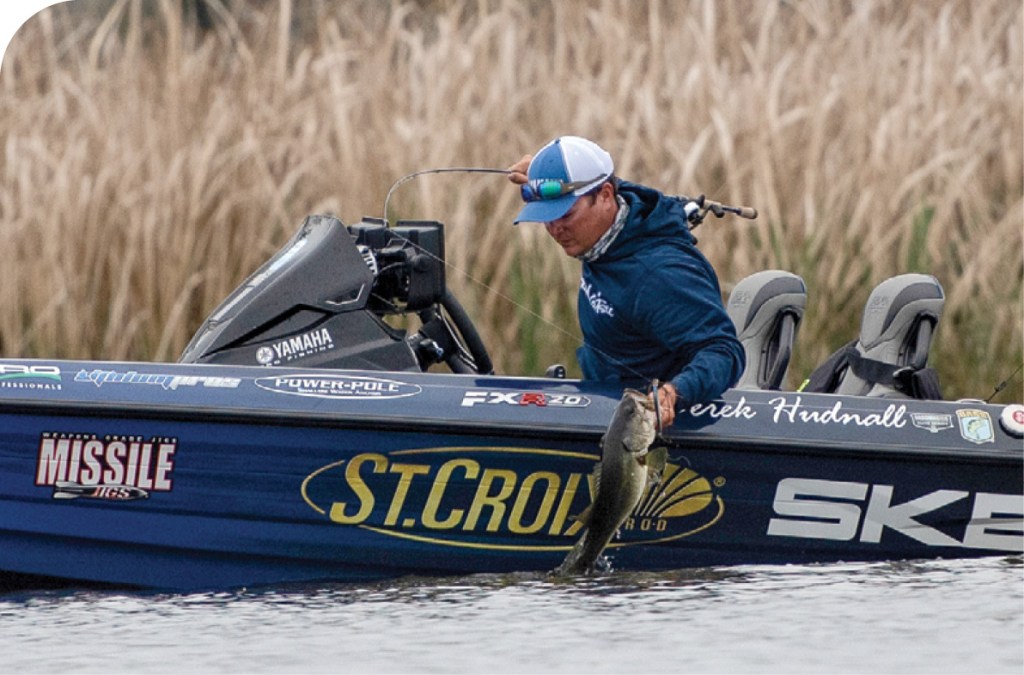
He got on the pattern years ago after Louisiana air temps had been in the 20s and a warming trend swept over the area.
“I saw a bass bust a shad shallow, picked up a buzzbait and won a tournament with it,” he says. “Anytime we have a similar situation, I don’t care what the water temperature is, I’m picking up that buzzbait.”
He doesn’t expect a lot of bites, but the ones he gets are big.
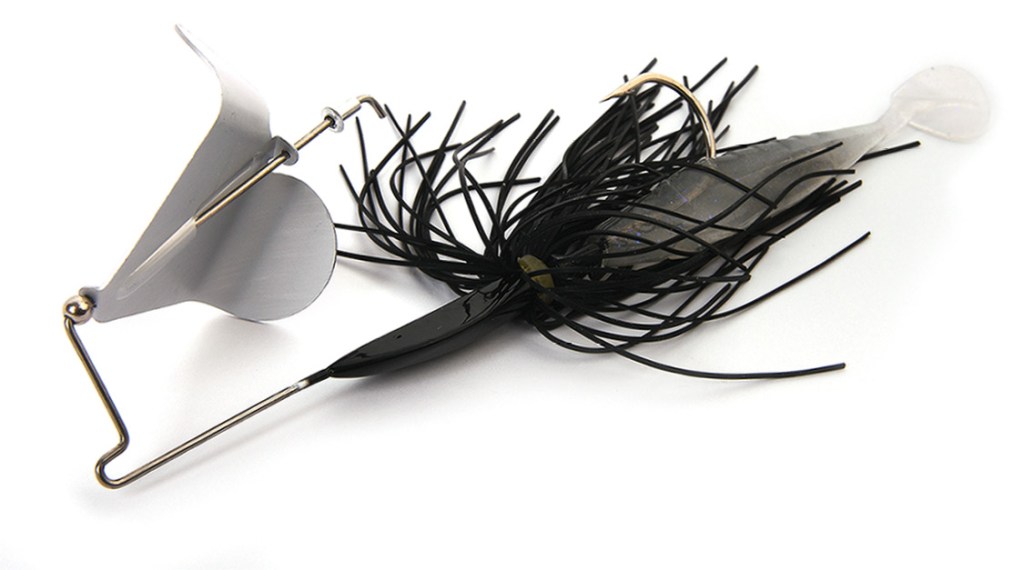
His lure choices are the smaller sizes of Prototype Lures’ Guerilla Buzz buzzbait with a full-size Missile Baits Shockwave or a white or black toad-style trailer.
“Throwing a buzzbait in cold water takes a lot of guts,” Hudnall admits. “But if you do it enough, it will happen and change your opinion, and you will get onto a technique no one else is using.”
Originally published in Bassmaster Magazine 2024.





